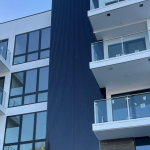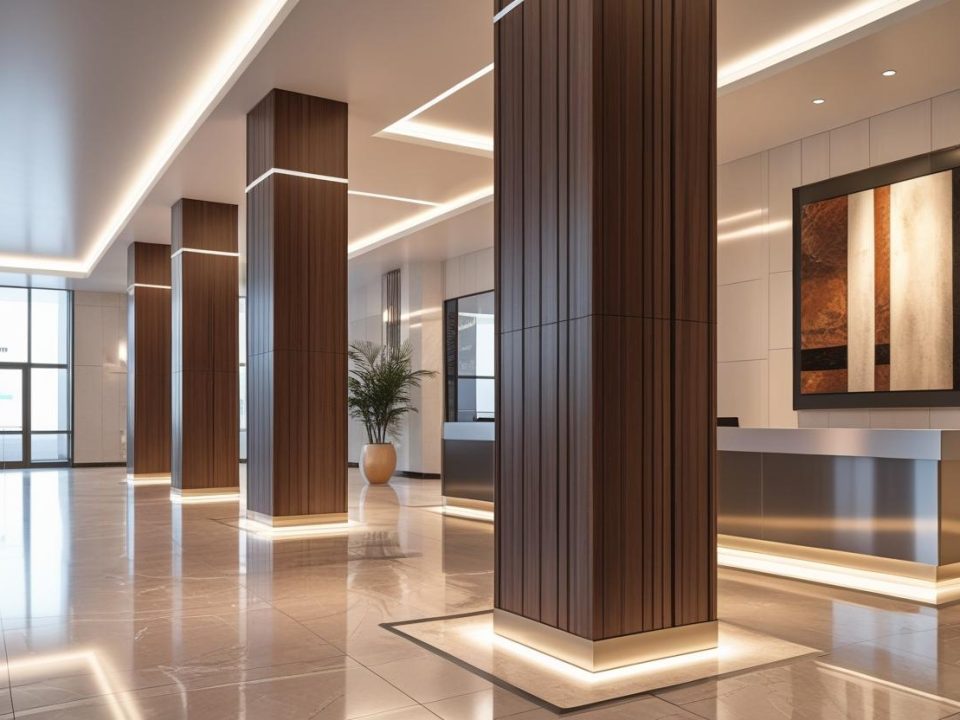
Aluminum Cladding’s Role in Sound Insulation for Buildings

Aluminum Cladding for Industrial Buildings: Top 5 Benefits and Challenges

Welcome to our comprehensive guide where we dive deep into the world of aluminum cladding finishes, specifically focusing on anodized versus powder-coated surfaces.
These finishes not only protect and extend the lifespan of aluminum cladding but also enhance the aesthetic appeal of buildings.
Let’s embark on a detailed comparison to help you make an informed decision for your next architectural project.
Introduction to Aluminum Cladding Finishes
Aluminum cladding stands out for its durability, flexibility, and the sheer range of finishing options it offers.
Two of the most popular finishes are anodized aluminum and powder-coated surfaces.
Each has unique properties, benefits, and applications, making them suitable for different environmental conditions and aesthetic preferences.
Understanding the basics of these aluminum coatings is crucial for architects, builders, and homeowners.
It’s not just about choosing a color; it’s about selecting a finish that ensures longevity, maintains appearance, and aligns with the building’s design ethos.
What is Anodized Aluminum?
Anodized aluminum undergoes an electrochemical process that converts the metal surface into a durable, corrosion-resistant, anodic oxide finish.
This process not only strengthens the metal but also allows it to maintain its natural luster.
Anodized aluminum is unaffected by UV rays, meaning it does not chip or peel, maintaining its finish for many years.
Anodizing is especially suitable for architectural projects where long-term durability and resistance to environmental elements are crucial.
It’s ideal for areas exposed to high UV levels or where a metallic appearance is desired.
Benefits of Anodized Aluminum Cladding
Anodized aluminum cladding offers several advantages. It provides excellent protection against the elements, resisting corrosion and abrasion.
Unlike paint, an anodized finish is integrated with the aluminum substrate, meaning it doesn’t flake or peel off.
Additionally, anodized aluminum retains its color and gloss for extended periods, even under constant exposure to sunlight.
This makes it an excellent choice for exterior cladding, ensuring the building’s facade remains vibrant and attractive over time.
What is Powder Coated Aluminum?
Powder coating is a process where a dry powder paint is applied to the aluminum surface and then cured under heat to form a skin.
It creates a thick, wear-resistant layer that is more flexible than traditional paint.
Powder-coated aluminum comes in a wide range of powder coat colors, offering excellent versatility in design and aesthetics.
This type of finish is ideal for achieving vibrant, long-lasting color and texture on aluminum cladding.
It is particularly well-suited for projects requiring specific color matching or those looking to make a bold architectural statement.
Benefits of Powder-Coated Aluminum Cladding
Powder-coated aluminum cladding is renowned for its aesthetic flexibility and uniform finish.
The powder coating process allows for a wide selection of finishes, from matte to glossy and everything in between.
Additionally, powder coating provides a consistent color and texture that is more uniform than anodized surfaces.
This finish is also highly resistant to chipping, scratching, and fading, making it suitable for high-traffic areas or environments with fluctuating weather conditions.
Powder coating is also environmentally friendly, as it produces fewer volatile organic compounds (VOCs) than liquid paints.
Comparing Durability and Maintenance
When comparing the durability of anodized and powder-coated aluminum cladding, both offer high levels of protection.
However, anodized aluminum generally has better resistance to abrasion and corrosion, making it slightly more durable in harsh environmental conditions.
In terms of maintenance, both types of finishes are relatively low-maintenance.
Anodized surfaces can be cleaned with water and mild detergent, while powder-coated surfaces may require more frequent cleaning to maintain their vibrant colors, especially in areas exposed to dirt and pollution.
Environmental Impact and Sustainability
Both anodized and powder-coated aluminum offer eco-friendly options for cladding.
Anodizing is a safe process that produces no hazardous by-products, and anodized aluminum is 100% recyclable.
Powder coating is also considered environmentally friendly, as it emits near-zero VOCs and the overspray can be reclaimed and reused.
However, in terms of sustainability, anodized aluminum may have a slight edge due to its longevity and recyclability.
This makes it an excellent choice for green building projects and for those looking to minimize their environmental footprint.
Aesthetic and Design Flexibility
When it comes to aesthetics, the choice between anodized and powder-coated aluminum cladding largely depends on the project’s specific design goals.
Anodized aluminum offers a more natural, metallic look that is subtle and refined.
In contrast, powder coating provides a broader range of colors and finishes, allowing for more vibrant and dynamic designs.
Both options allow architects and designers to create stunning exteriors, but the final choice will depend on the desired visual impact and the building’s surroundings.
Cost Considerations
The cost of anodized and powder-coated aluminum cladding can vary depending on several factors, including the thickness of the panels, the complexity of the project, and the chosen finish.
Generally, anodizing is a less expensive process, but the overall cost difference between the two options is not typically significant.
When considering cost, it’s also essential to factor in the lifespan and maintenance requirements of the cladding, as these can impact the total cost of ownership over time.
Conclusion
Choosing between anodized and powder-coated aluminum cladding involves weighing factors such as aesthetics, durability, maintenance, and cost.
At GTO Aluminum, we understand the complexities of this decision and are here to help guide you through the selection process.
Our team of experts can provide detailed information on the benefits and applications of both anodized and powder-coated finishes, helping you choose the best option for your specific project needs.
With our extensive range of aluminum cladding solutions, we are committed to delivering high-quality products that meet your design, durability, and sustainability requirements.
Let GTO Aluminum be your partner in creating stunning, durable, and eco-friendly building exteriors.
Contact us today to explore our aluminum cladding options and discover how we can help bring your architectural visions to life!





